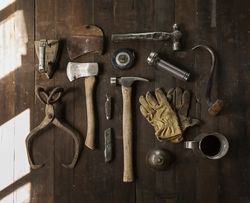What are the different styles of massage?
From corporate massage-chain stores to boutique spas the different styles of massage (as well as the names to describe them) can be overwhelming. Add to that manual therapy or other clinical approaches (like cranio-sacral) and you have a dizzying array of modalities and styles to choose from. How can you make sense of this when you’re thinking about getting a massage?
I like to divide this broad range of styles into two categories based on what the focus of the experience is. Let’s call this:
- the “during” experience and
- the “after” experience
The “during” experience is of course centered around the massage. But it includes much more – everything that makes up the atmosphere such as music, attitude of the staff, how luxurious the sheets are and what scents to choose from. While the quality of the massage is important, the measure of success is usually about how relaxed it – and the atmosphere – makes you feel while you are receiving it.
In the “after” focused experience, the setting is often more clinical. Perhaps there are educational materials to read, you might be shown exercises that can help you at home, and the expertise of the practitioner is as important as their demeanor. In the session itself, the focus is about resolving an issue or improving function – often without relaxing music, oils, or scents.
As you can see from the above, these two basic ways of looking at different styles of massage can help categorize a broad range. But what happens when a massage lands somewhere in the middle? Of course every massage will have aspects of both but the beauty of massage is how each therapist can craft their own unique style.
Structural Bodywork
For me, the style of massage I prefer is called Structural Bodywork (SB) and it falls somewhere in the middle, drawing from the different aspects of each focus. Regardless of whether the focus is on the “during” or the “after”, what I like about SB is that it puts the client at the center of the treatment both in terms of what the experience is about during and the benefit that is gained after.
One goal of SB in the “during” experience is to include the client in the release of tension through movement. The benefit of this is twofold: any release happening from my hands can be expanded into related areas through the right kind of client movement. (For more on this see me blog post here.) The second benefit is that becoming active while experiencing relaxation is a powerful way to refresh the nervous system as well as to reconnect with your body in a new way.
The goal for the “after” is perhaps more familiar – decreased pain and improved function. One way I try to benefit the client with this “after” goal is to target the connective tissue for a more lasting impact. SB works in such a way as to stimulate the remodeling response within the connective tissue – the innate ability of the connective tissue to become malleable and more efficient at adapting to demands. This makes for more effective and longer lasting improvement.
So for the time being, while the world of massage is still so diverse and no clear distinctions are established from within the profession itself, perhaps this food for thought will help you clarify what the different kinds of massage are.

